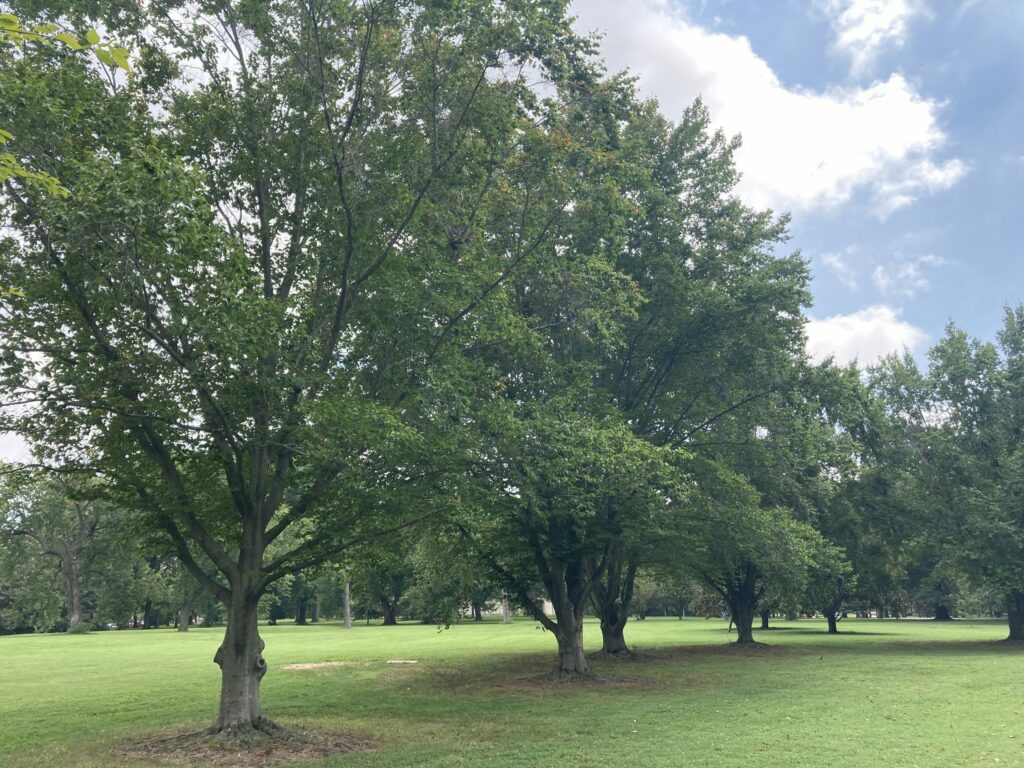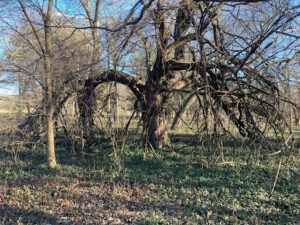American beech, Fagus grandifolia, is native only to the southeastern corner of Missouri, and struggles to grow around St. Louis. It is intolerant of clay soil, which we have more of than we’d like, and needs excellent drainage. Even in their true native range they are “finicky” and one of those species that just seems to want to be left in the woods. This is a great frustration for tree lovers because American beech is an absolutely gorgeous species. Its bark is smooth, greyish-white (reminiscent of sycamore), with muscular striations that closely resemble American hornbeam (Carpinus caroliniana, also known as blue beech for the resemblance). The tree grows to heights of 100 feet or more, with a spreading, rounded crown. In fall the leaves turn gold, making sugar maple-beech forests legendary for their fall color. Open-grown specimens tend to form huge, low branches that sweep out close to the ground, reaching a spread often equal to or surpassing its height. This kind of beauty is just too much to give up on, and so we plant beech, we watch them suffer, and we suffer with them for want of what we cannot have.
Beech plantings can be successful, but they require that rare thing, the perfect site. They love deep, rich soil, and in the past were taken as indicators of good farmland (which in turn means that their populations were decimated by early settlers clearing the land). There are nice specimens in the St. Louis area, they are just quite rare. More commonly the European beech (Fagus sylvatica) is planted due to its greater adaptability and pollution tolerance, but these strengths are relative – it doesn’t do particularly well in our area either.
Once successfully established though, the hard work of growing this species is not over. Beech grown outside of a forest have a tendency to form multiple central leaders that are prone to splitting in storms. They also branch low to the ground. Together, this means they will require quite a bit of pruning to behave well in the landscape. Luckily the branch collars are very easy to see, owing to the thin bark…but the wood is also extremely dense, so making those cuts may wear you out, even with a sharp saw. (Beech does make exquisite firewood, burning hot, clean and slow all night long. Camping in maple-beech forests in fall is a treat for many reasons, this glorious warmth being but one of them).
On a personal note, I have had great success with beech plantings only once, in a grove of old sugar maples on a hilltop in Forest Park. The soil here, sparsely covered in grass due to the deep shade of the maples and their aggressive, fibrous roots, is undisturbed, uncompacted, and somewhat sandy (for St. Louis at least). Sugar maple and beech have grown in association for millenia, and I credit the maples with helping their ancient forest allies to establish here. Which just proves yet again that it’s always best to follow nature’s lead in such matters.
And one last thing…if you come across a nice American beech, please don’t carve your initials into it!




